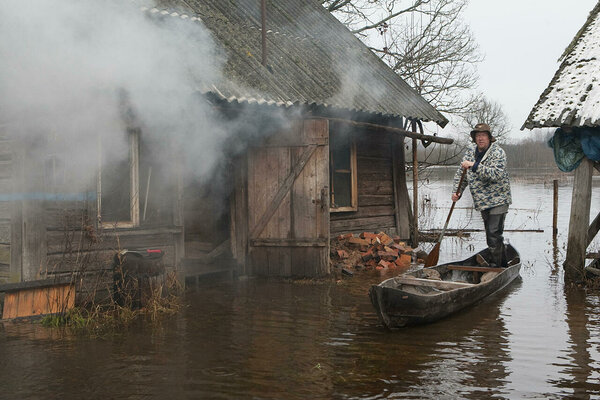On 14 December 2021, UNESCO’s Intergovernmental Committee for the Safeguarding of the Intangible Cultural Heritage decided to inscribe ”Building and use of expanded dugout boats in the Soomaa region” on UNESCO’s List of Intangible Cultural Heritage in Need of Urgent Safeguarding. Soomaa’s dugout boat culture thus became Estonia’s fifth inscription under UNESCO’s 2003 Convention for the Safeguarding of the Intangible Cultural Heritage, and the first inscription under the list in need of urgent safeguarding.
Expanded dugout boat in Soomaa is a canoe-like boat, hollowed out from a single tree (usually, aspen), with expanded sides and a shallow base. Building of a dugout boat is an integrated and complex process, beginning with the identification of a suitable tree and culminating with the boat’s launching. The central and visually most distinctive stage of dugout boatbuilding is expanding of the sides. From the interaction of heat and moisture, including fire and water, the dugout boat board is significantly expanded, thus increasing the boat’s volume, maneuverability and carrying capacity. Dugout boats have been exceptionally important for Soomaa residents as they have formed an essential part of everyday culture. Until 1960s, dugout boats were used for daily transport on rivers and fishing. Today, uses of the dugout boat have changed and it is not as indispensable. However, its recreational uses and cultural meaning have preserved – dugout boats occupy important place in the identity of Soomaa community.
According to dugout boat master and nature tourism entrepreneur (Soomaa.com) Aivar Ruukel, dugout boats have a special role in the identity and cultural heritage of the Estonian people and in particular of the Soomaa region’s community. "Dugout boats represent our roots, history and identity. In today’s cultural space it is especially remarkable that one element of Soomaa region’s distinctive heritage has made it into the UNESCO list. The UNESCO inscription is also a major recognition of today’s five dugout boat masters who carry forward the centuries-old cultural heritage of Soomaa’s past dugout boat builders.”
In practical terms, the inscription of Soomaa’s dugout boat culture in the UNESCO list in need of urgent safeguarding will mean that Soomaa’s dugout boat culture will be protected in line with a multi-year safeguarding plan that will, among else, aim to train next generation of highly skilled dugout boat masters and ensuring intergenerational continuity of this tradition. Another key objective of the safeguarding plan is to revitalise current uses of dugout boats and create novel sustainable uses that will help keep this ancient tradition alive but also evolving.
In the words of Oliver Loode (URALIC Centre), member of the UNESCO application project team led by the Estonian Dugout Boat Society, the inscription of Soomaa’s dugout boat culture in UNESCO’s ICH list may also be of interest to other Finno-Ugric peoples and indigenous peoples worldwide. “Soomaa’s dugout boat culture shares much in common with dugout boat heritage among Finno-Ugric peoples of Russia and indigenous peoples worldwide, including in the USA and Canada. We hope that the example of Soomaa’s dugout boat culture will stimulate discussions on whether these states, too, should ratify the ICH Convention so that the dugout boat heritage in these states could enjoy similar levels of protection like as of today in Estonia”.

Write first comment